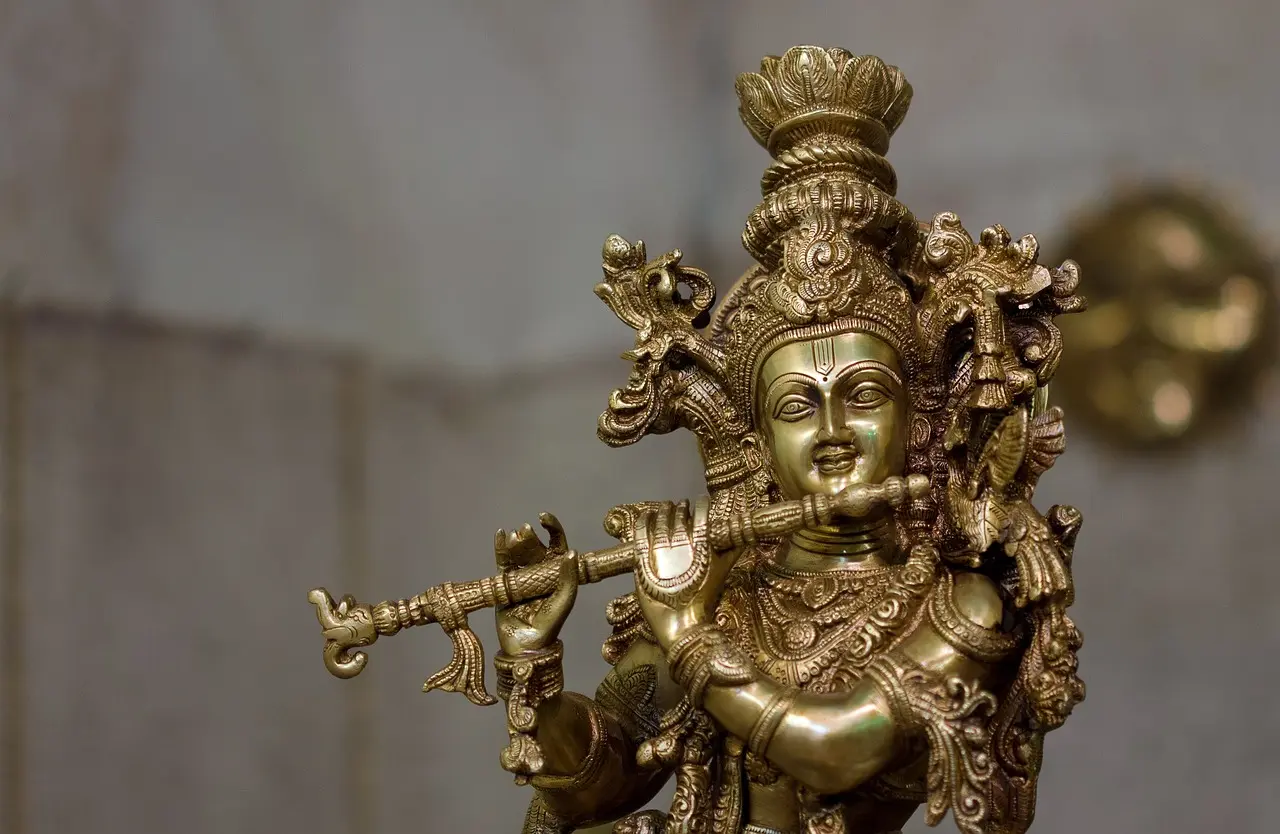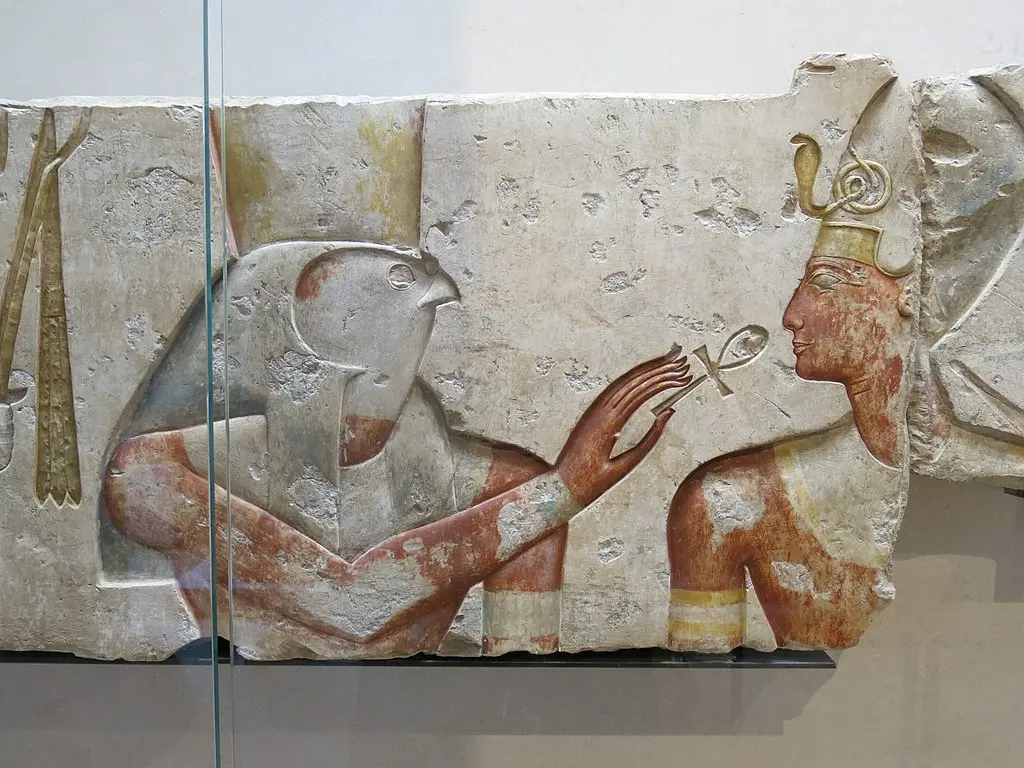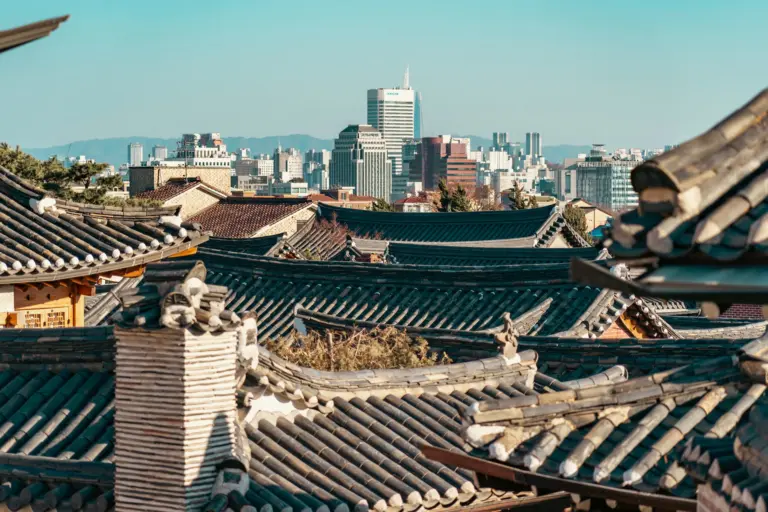In the mosaic of ancient practices that have gracefully traveled through time and still resonate with modern sensibilities, the art of Mudras holds a very significant place.
These elegant hand gestures, deeply rooted in Eastern philosophies and practices, are more than just symbolic representations; they are bridges connecting our physical realm to the subtleties of our inner world.
Encompassing ancient history, neuroscience, and spiritual meaning, Mudras offer a glimpse into the profound interplay between the body, mind, and soul.
In this comprehensive dive into the realm of Mudras, we’ll explore their historical origins, the science behind their potency, and uncover the deep-seated benefits of some of the most iconic gestures.
Join this enlightening journey, as we unlock the mysteries behind these ancient hand gestures and reveal the transformative power they hold within.
Table of Contents
Toggle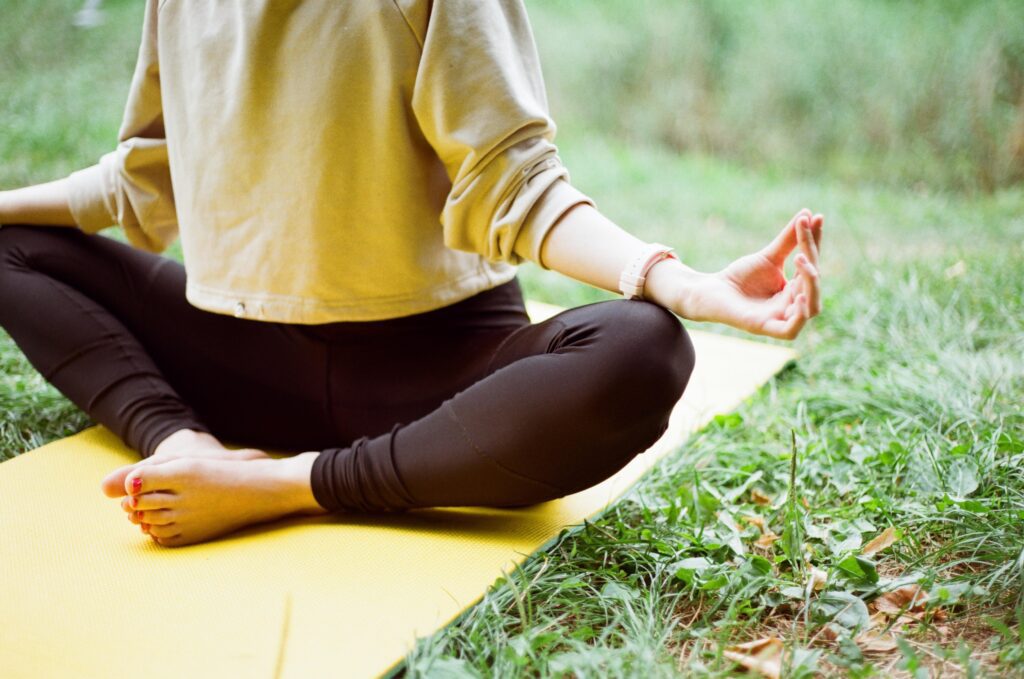
What are Mudras?
Mudras are symbolic hand gestures that have been used for millennia across various cultures and spiritual practices to signify certain states of mind.
It is a Sanskrit word, which means “gesture,” mudras play a significant role in yoga, meditation, and even traditional dance forms found in India, Thailand, Cambodia, Laos, and Myanmar.
They serve as a critical point of connection between the physical and spiritual realms.
In the context of yoga and meditation, mudras are believed to help channel the flow of energy within the body, affecting the mind, consciousness, and one’s spiritual journey.
They’re not only restricted to hands but can also involve the whole body, eyes, or tongue.
However, hand mudras are the most commonly recognized and it’s what we’ll be focusing on today.
Each mudra has a specific meaning, purpose, and often correlates with specific aspects of the Buddhist or Hindu pantheon.
While most prominently associated with Eastern practices, variations of hand gestures can be found globally.
In Christian art, Christ, saints, and angels are often portrayed using specific hand positions to denote blessings, teachings, or divine revelations.
Although not termed “mudras,” the underlying intent—to communicate profound truths through hand gestures—is similar.
Origin of the Mudras
Mudras and Yoga
Long before mudras became widely recognized around the world, they held a special place in ancient yogic traditions.
The Vedas, the oldest sacred scriptures of India, provide the earliest references to practices that would later be integrated into yoga.
The Upanishads, philosophical texts that expanded on the Vedas, delved deeper into concepts of self-realization and the union of individual consciousness with universal consciousness (which is the main principle of yoga).
While mudras aren’t described in detail in these scriptures, the groundwork for a system that integrates body, mind, and spirit – which includes the use of mudras – was being laid.
Key ancient texts like the “Yoga Sutras of Patanjali” and the “Hatha Yoga Pradipika” give us insights into yogic practices. In these texts, mudras are described as tools to stabilize and elevate pranic (life force) energy within the body.
Today’s yoga classes, whether it’s Vinyasa, Hatha, or Kundalini, integrate mudras into their sequences, making them accessible to a broader audience.
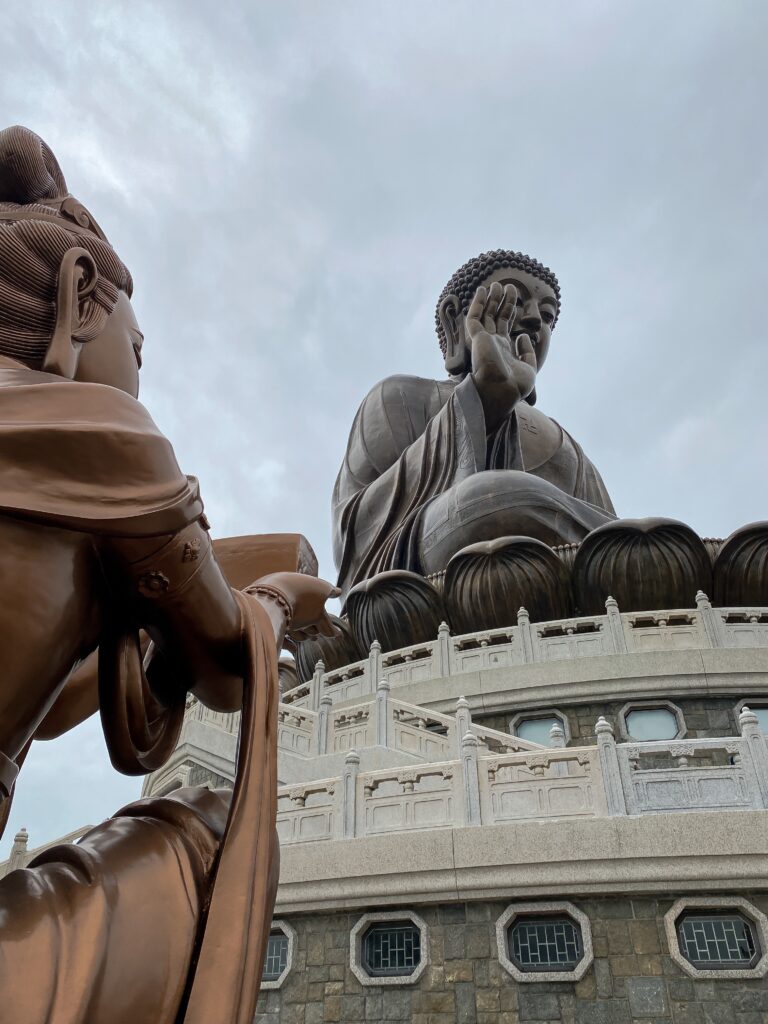
Mudras and Buddhism
If you ever observed a statue or an image of Buddha, you’d often find him depicted with distinct hand gestures. Whether it’s in Angkor Wat in Siem Reap or the White Temple in Chiang Rai, each of these gestures represents a specific moment in Buddha’s life, a certain teaching, or an emblematic value in Buddhism.
Vajrayana Buddhism places a significant emphasis on esoteric practices. Within this tradition, mudras are used extensively in many a rituals.
These mudras, often combined with mantras (sacred chants) and mandalas (sacred geometric designs), are believed to invoke deities specific to the one’s intention.
Beyond symbolic representation, mudras in Buddhism play a functional role in meditation.
The Science Behind Mudras
the Human Hand Anatomy
The human hand is a marvel of evolution and an intricate network of muscles, tendons, bones, and nerves.
The skin on our hands is laden with numerous sensory receptors, which are sensitive to touch, pressure, temperature, and pain. These receptors are directly linked to our nervous system and play a crucial role in transmitting sensory information to our brain.
Three major nerves run through our hands: the radial, median, and ulnar nerves.
Each of these nerves has its own pathway and area of influence. They govern the sensations we feel in different parts of our hands and fingers and control various muscle movements.

The Brain-Hand Connection
The hand and the brain share a dynamic relationship. The area of the brain dedicated to hand movements and sensations, known as the “cortical homunculus”, is disproportionately large compared to other body parts.
This signifies the hand’s importance in our daily interactions.
When we form mudras, we are effectively stimulating specific nerve endings and pathways in our hands.
This, in turn, sends signals to associated regions in the brain. The continuous feedback loop between our hands and the brain means that certain hand positions can influence mental states, emotions, and even physiological functions.
This deep interconnectedness of the hand’s anatomy and neural network provides a scientific rationale for the profound effects described in ancient texts regarding mudra practices.
When we delve into the anatomical and neurological intricacies of the hand, we begin to fathom how intentional configurations of fingers and palms can resonate with our internal energies, potentially channeling them for enhanced well-being and spiritual growth.
The intimate relationship between our hands and our brain is underpinned by a complex network of neural pathways, which are responsible for the myriad of tasks our hands perform, from the simplest touch to the most intricate of gestures.
Recent research has highlighted the presence of “mirror neurons” in the brain.
These neurons fire not only when we perform an action but also when we see someone else performing that same action.
Mudras, being visual as well as tactile, might stimulate these neurons, leading to a deeper connection and understanding of the gesture’s significance.
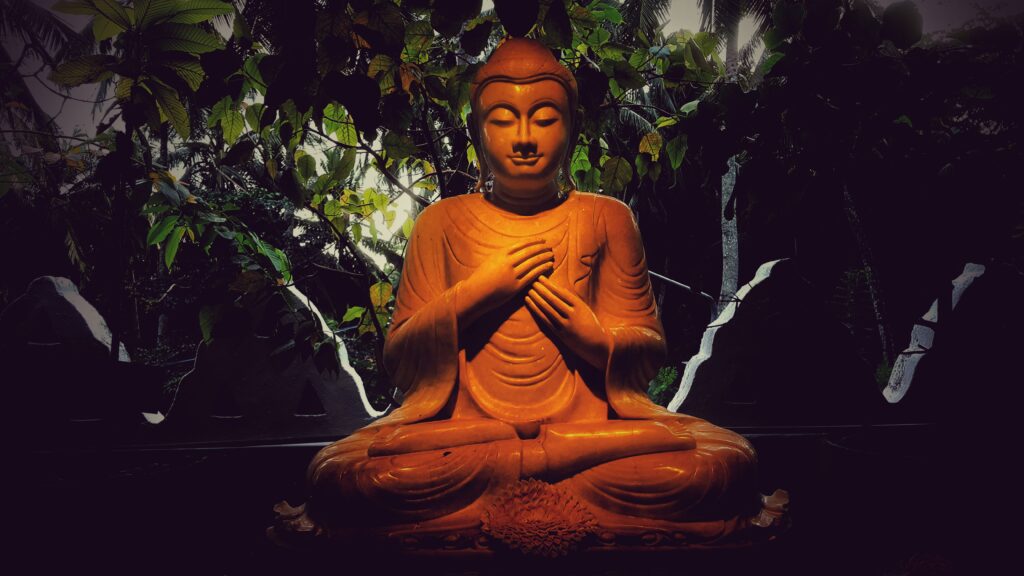
How Do Mudras Work?
The way mudras might exert their effects, both physically and mentally, is a blend of established science and ongoing research. Here are some interesting mechanisms:
- Stimulation of Acupressure Points: Traditional Chinese medicine speaks of meridians (energy pathways) throughout the body. This system is used by even accupucture and Qi Gong. The fingers and palms have several acupressure points that, when stimulated, can influence specific organs and systems. Mudras work by exerting pressure on these points, either enhancing or balancing energy or Qi flow.
- Neuroplasticity and Reinforcement: Regular practice of mudras might lead to strengthening of certain neural pathways. The brain’s plasticity means it can change and adapt, and consistent gestures or postures could reinforce certain pathways, leading to enhanced focus, calmness, or even altered states of consciousness.
- Balancing of the Autonomic Nervous System: Certain mudras are said to have a calming effect, reducing stress. This is due to a balancing effect on the autonomic nervous system, shifting the balance from the sympathetic (fight or flight) to the parasympathetic (rest and digest) system.
- Bioelectrical Energy Flow: Our bodies conduct bioelectricity, with different organs and tissues having specific potentials. Some propose that mudras, by creating distinct circuits with our fingers and palms, can influence this bioelectric flow, potentially harmonizing imbalances.
As science advances, we might uncover even more about these ancient gestures, bridging the gap between tradition and modern understanding.
Benefits of Performing Mudras
Cognitive Improvements
Studies have shown that the regular practice of specific mudras, especially when combined with meditation or focused breathing, can have positive effects on the psyche.
These include reductions in anxiety levels, improvements in mood, enhanced focus and concentration, and even better memory recall.
The simple act of consciously forming a mudra can itself serve as a focal point, bringing about heightened awareness. As a part of broader meditation practices, mudras can further refine and concentrate this attention.
Apart from attention and memory, mudras can also assist in achieving a state of mind conducive to clearer and more structured thought processes.
Neurological Shifts
Modern imaging techniques, like fMRI and EEG, have been employed to study the brain activity of individuals while they perform mudras.
These studies have highlighted changes in brainwave patterns, shifting towards alpha and theta states, which are often associated with relaxation and heightened creativity.
Furthermore, some mudras have shown to activate specific brain regions, suggesting a targeted influence on brain function.
Many mudras, when practiced in a meditative state, can lead to a decrease in cortisol levels, the primary stress hormone.
By reducing cortisol and stimulating the vagus nerve, certain mudras might promote a shift in the autonomic nervous system balance, promoting relaxation and recovery.
As mentioned earlier, emerging studies in neuroscience hint at the concept of neuroplasticity, where the brain’s neural synapses and pathways are altered as an effect of behavior and environment.
Mudras, through their potential stimulation of specific neural circuits, can encourage such positive neuroplastic changes, leading to lasting improvements in cognitive function.
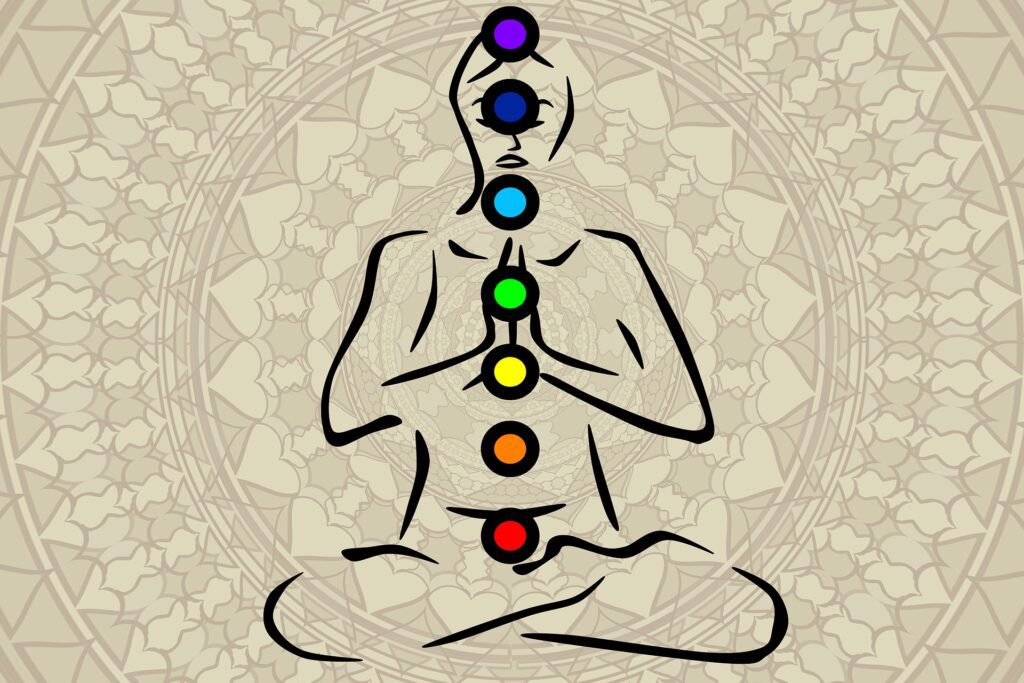
Spiritual Healing
At the heart of many Eastern traditions is the belief in a life force, known as “Prana” in Sanskrit.
Mudras are said to channel this energy, directing its flow and rectifying any imbalances.
Meanwhile, chakras, the energy centers within the body (similar to the meridian pathways), play a crucial role in one’s spiritual and physical health.
Plenty of mudras are used in aligning and activating these seven chakras, promoting overall well-being.
5 Powerful Mudras and Their Benefits
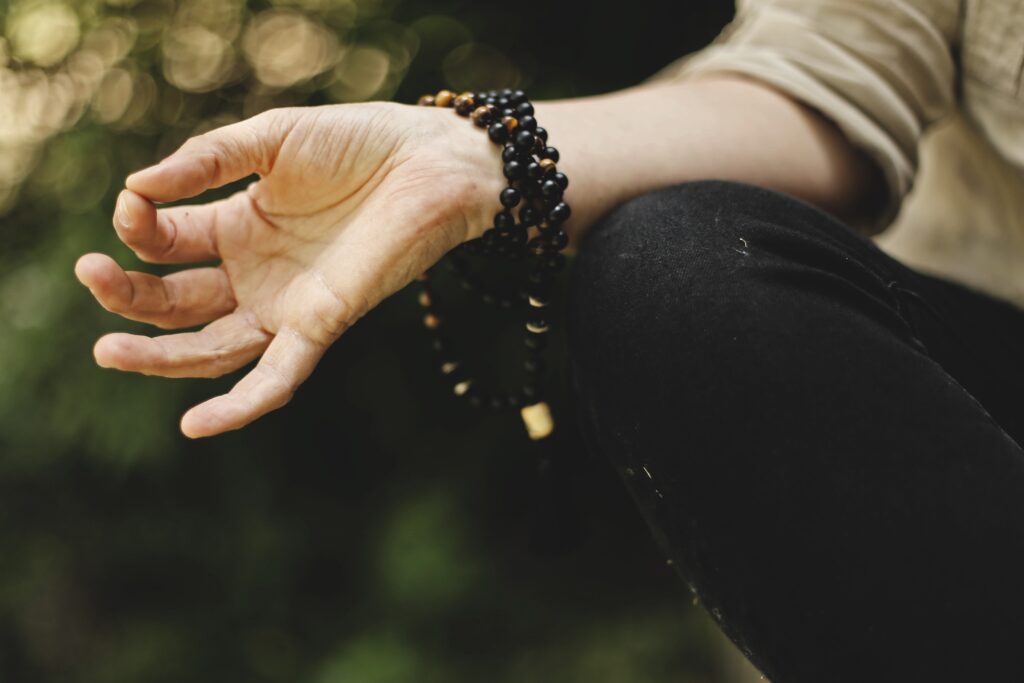
1. Gyan Mudra
The Gyan Mudra is arguably one of the most recognized and widely practiced mudras in both yoga and meditation. I’m sure almost everyone has seen this at one point in their life.
The word “Gyan” translates to “knowledge” in Sanskrit, and this mudra is often referred to as the “mudra of knowledge.”
- Formation: The Gyan Mudra is formed by connecting the tip of the thumb and the tip of the index finger together, while keeping the other three fingers straight, yet relaxed. The palms can face upwards, which is traditionally used during meditation for receiving energy, or they can face downwards, grounding the practitioner.
- Spiritual Significance: In yogic traditions, each finger is associated with a different energy or force. The thumb represents universal consciousness, while the index finger represents individual consciousness. By joining these two fingers, one is symbolically connecting the individual soul (atman) with the universal consciousness (brahman).
Benefits of the Gyan Mudra:
-
Enhances Concentration and Memory: The connection between the thumb and index finger stimulates the brain, specifically areas associated with knowledge, learning, and memory.
-
Promotes Mental Peace: It’s a grounding mudra, helping you remain present and focused.
-
Stimulates the Root Chakra: This mudra is believed to stimulate the Muladhara or the root chakra, ensuring a sense of stability.
-
Improves Sleep Patterns: By calming the mind, Gyan Mudra can help insomniacs and those with disturbed sleep patterns.
-
Boosts Air Element: In Ayurveda, the index finger is associated with the air element. By forming the Gyan Mudra, the air element is balanced, which is linked to the mind and its functions.
-
Rejuvenates the Nervous System: The positioning in the Gyan Mudra helps in activating and harmonizing the nervous system.
-
Supports Spiritual Enlightenment: As the mudra of knowledge, it assists those on a spiritual path, it’s one of the mudras primarily used for enlightenment.

2. Abhaya Mudra
The Abhaya Mudra prominently symbolizies blessings, protection, peace, and dispelling of fears. “Abhaya” in Sanskrit translates to “fearless”. It’s one of the mudras you will undoubtedly see as you visit temples around Southeast Asia and East Asia.
This mudra represents strength, security, and an assurance of protection from both the divine and temporal realms.
- Formation: To form the Abhaya Mudra, the right hand is raised to shoulder height with the arm bent. The palm faces outward, fingers extended upwards, and the thumb is close to the palm. The left hand remains downward at the side of the body or may assume another mudra depending on the tradition.
- Spiritual Significance: The Abhaya Mudra is deeply rooted in Buddhist, Hindu, and Jain iconography. Many images of deities, Buddha figures, and ascetics depict this gesture. In the Hindu tradition, deities such as Lord Vishnu and other protective deities often display this gesture as a sign of granting protection to their devotees. In Buddhism, it signifies the fearlessness and protection offered by the Buddha upon attaining enlightenment.
Benefits of the Abhaya Mudra:
Dispelling Fear and Granting Assurance: Adopting the Abhaya Mudra can bring a sensation of safety, security, and inner peace, helping one face the challenges of life with renewed vigor.
Promotes Confidence and Strength: Regular practice instills a sense of courage and diminishes anxieties, allowing individuals to approach situations with a calm mind and heightened confidence.
Enhances Concentration: The raised hand position aids in alertness and attentiveness, thereby sharpening focus during meditation.
Fosters Positive Energies: The open palm facing outward is seen as a gesture of sending out positive vibes and blessings to those around.
Spiritual Growth: The mudra’s rich iconography in religious contexts serves as a reminder of the divine protection one receives on their spiritual journey, motivating further growth and realization.
A Reminder of the Higher Power: Seeing the Abhaya Mudra serves as a reminder of the eternal protection granted by the divine, fostering faith and devotion.

3. Shuni Mudra
In Sanskrit, “Shuni” means “sky.” This Shuni Mudra is often referred to as the “mudra of patience,” indicating the one’s openness and commitment to receiving cosmic energies.
Personally, I find that it offers a lot of mental clarity and the quieting of the mind so to speak.
- Formation: To form the Shuni Mudra, the tip of the middle finger touches the tip of the thumb, while the other fingers are held straight and relaxed. This creates a circle that allows energy to flow freely while directing the flow of prana through the body.
- Spiritual Significance: The middle finger represents the sky or ether element (Akasha Tattva) in Ayurveda and yogic traditions. By joining it with the thumb – which symbolizes fire – the Shuni Mudra is believed to ignite the etheric force within, promoting higher states of consciousness and the ability to discern the truth.
Benefits of the Shuni Mudra:
Promotes Patience : Regular practice of this mudra helps cultivate patience, enabling us to wait for the right opportunities and act with discernment.
Stimulates Higher Consciousness: The union of the ether and fire elements facilitates heightened awareness, clarity of thought, and intuitive abilities.
Aids in Healing: Shuni Mudra is believed to have therapeutic properties, helping in the healing of ear and hearing problems owing to its association with the ether element.
Enhances Communication: Ether is linked with the throat chakra, which governs communication. Practicing this mudra can enhance one’s communication skills, both in terms of speaking and listening.
Instills Responsibility: The mudra encourages the us to act responsibly, understanding the implications of their actions on themselves and others.
Balances Emotions: The gesture aids in balancing emotions, especially when they are in turmoil, granting the us calmness and the ability to tackle situations rationally.
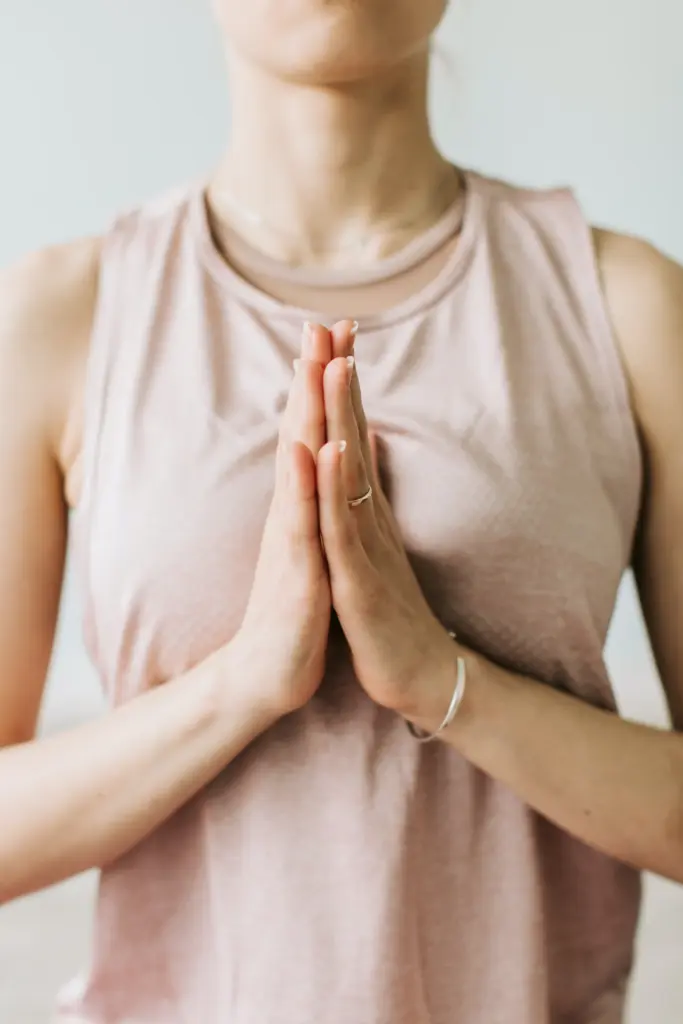
4. Anjali Mudra
The Anjali Mudra is an almost universal mudra. It holds a special place in various cultural and spiritual traditions all around the world. In Sanskrit, “Anjali” translates to “divine offering,” emphasizing its essence as a gesture of love, respect, and devotion.
Which is why it’s sometimes simply just called “prayer pose.”
- Formation: To form the Anjali Mudra, both hands are brought together, palm to palm, usually in front of the heart or chest, similar to a prayer position commonly seen in many cultures. The fingers point upwards, and the thumbs rest lightly against the sternum.
- Spiritual Significance: Anjali Mudra is a universal gesture of greeting, respect, and adoration. By placing the hands in front of the heart chakra, it serves as a bridge between oneself and others, extending to even the universe. It’s a mudra that symbolizes unity, the coming together of the individual with the divine.
Benefits of the Anjali Mudra:
Fosters Connection: The act of bringing the hands together harmonizes the two hemispheres of the brain and fosters a connection between you and the environment or the person you’re greeting.
Promotes Heart Qualities: By placing the hands near the heart, the gesture cultivates feelings of compassion, love, and gratitude, enabling us to connect more deeply with their inner selves and others.
Aids in Focus: In meditation, the Anjali Mudra can help center attention and focus the mind, acting as a conduit for one’s devotion.
Enhances Equanimity: The balanced positioning of the hands encourages a state of harmony and equilibrium, bringing about mental and emotional stability.
Symbolizes Unity: Beyond its physiological benefits, the Anjali Mudra stands as a recollection of oneness.
Physical Benefits: The pressing of the palms together stimulates the heart and helps in regulating the heart’s pressure, benefiting cardiovascular health.
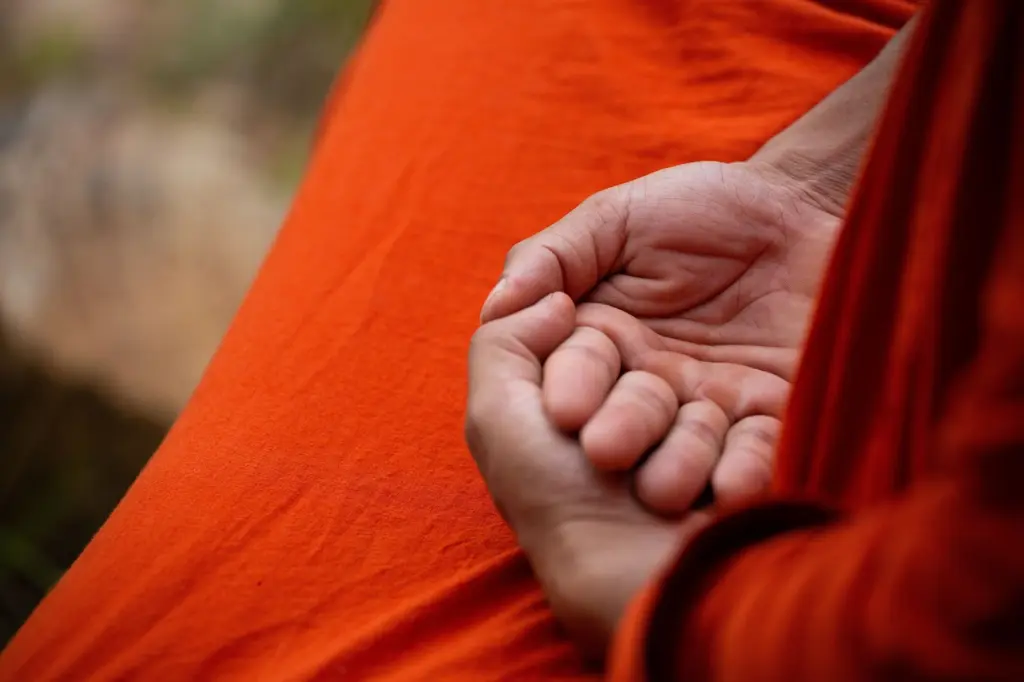
5. Dhyana Mudra
Dhyana Mudra is one of the foundational gestures recognized within Buddhist meditation practices.
Its name, “Dhyana,” translates to “meditation” in Sanskrit, directly alluding to the primary purpose of this mudra: deep contemplation and inner union.
Hence, it’s earned the moniker of the “mudra of meditation.” Amitabha Buddha, one of the Cosmic Buddhas, is usually depicted in this mudra.
- Formation: In the Dhyana Mudra, both hands are placed on the lap. The right hand, symbolizing enlightenment and higher spiritual faculties, lies on top of the left hand, symbolizing the world of maya, or illusion. The fingers extend fully, and the thumbs might lightly touch each other, forming a mystic triangle. This positioning embodies the perfect balance between the physical and spiritual realms. While some variations, like the photo above is simply the right hand resting on top of the left.
- Spiritual Significance: The Dhyana Mudra predominantly focuses on the deep state of meditation it seeks to evoke. The very act of placing one hand over the other and uniting the thumbs forms a circle, representing the continuous flow of energy and the cyclical nature of existence.
Benefits of the Anjali Mudra:
-
Fosters Connection: The act of bringing the hands together harmonizes the two hemispheres of the brain and fosters a connection between the practitioner and their environment or the person they are greeting.
-
Promotes Heart Qualities: By placing the hands near the heart, the gesture cultivates feelings of compassion, love, and gratitude, enabling individuals to connect more deeply with their inner selves and others.
-
Aids in Focus: In meditation, the Anjali Mudra can help center attention and focus the mind, acting as a conduit for one’s devotion and intention.
-
Enhances Equanimity: The balanced positioning of the hands encourages a state of harmony and equilibrium, bringing about mental and emotional stability.
-
Symbolizes Unity: Beyond its physiological benefits, the Anjali Mudra stands as a testament to unity and wholeness, reminding practitioners of the interconnectedness of all life.
-
Physical Benefits: The pressing of the palms together stimulates the heart and helps in regulating the heart’s pressure, benefiting cardiovascular health.

